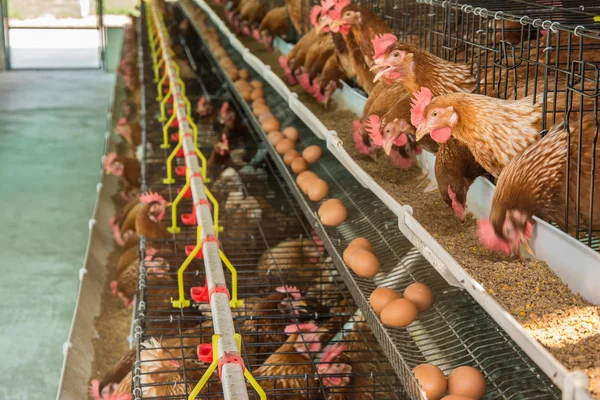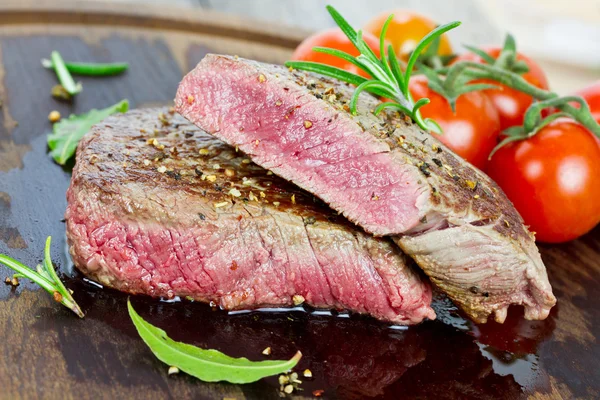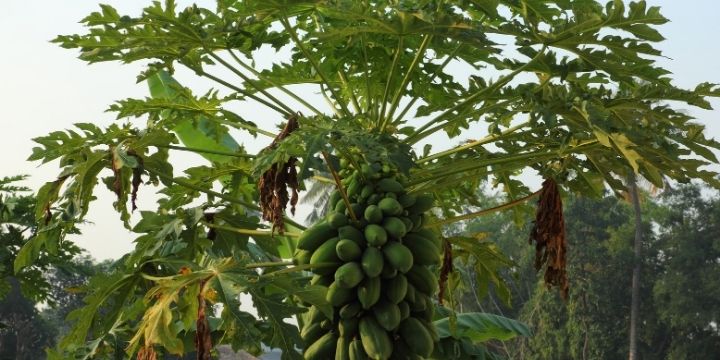Are you looking to start or improve your layers chicken farming project this year?
Our previous post on layers farming in Kenya proved that various flock sizes such as 50, 100, 200, 500 and birds are profitable. Profitability grows with more birds due to economies of scale. With the human population and living standards rising and more people seeking affordable protein, starting a layer chicken farm can be a profitable venture.
In this blog post, you will explore how egg layer chicken farming is in 2024 using the cost-benefit analysis for 100 birds. The analysis uses prevailing market prices for chicken products and inpurts to guide your decision on whether to start or grow your farm.
Table of Contents
- Demand and Supply of Eggs in Kenya 🥚
- Equipment Budget for 100 Layer Chickens
- How to Rear Layers Chicken Successfully
- Feeding Schedule for 100 Layers in Kenya
- Vaccination Schedule for Layers chicken in Kenya
- What is the Cost and Profit for Raising 100 Layers in Kenya?
- Key Challenges facing Layers Chicken Farmers in kenya
- Tips for Success
Demand and Supply of Eggs in Kenya 🥚
The egg market in Kenya has been growing steadily. With a larger population and more awareness of the health benefits of eggs, they’re becoming a popular and affordable protein option. However, supply hasn’t caught up with demand. This shortage creates opportunities for farmers to fill the gap. In 2024, egg production is expected to continue growing, making it a good time to invest in layer chicken farming
- 🐔 As of 2023, Kenya’s hybrid layers chicken population is estimated at 6.2 million birds, up from 5.58 million in 2019.
- 🥚 Kenya’s total supply of eggs is around 1.8 billion eggs per year as of 2023, up from 1.6 billion in 2019.
- 🍳The per capita egg consumption in Kenya has risen from 45 eggs per person per year in 2019 to an estimated 52 eggs per person per year in 2022
- 📈 Kenya’s Total demand for Eggs in Kenya is around 2.8 billion eggs per year. (Population × Per capita consumption) With a total population of 53 million, and per capita consumption of 45 eggs
- 📉The estimated egg deficit in Kenya is around 1 billion eggs per year in 2023, where (Egg deficit = Domestic demand – Egg production) Total domestic egg demand: 2.8 billion eggs per year and Total egg production: 1.8 billion eggs per year
How to Rear Layers Chicken Successfully
Running a successful layer chicken farm requires careful planning and attention to detail at every stage of your flock’s life. From day one, you must focus on feeding, vaccination, and biosecurity to keep your chickens healthy and productive. To learn how to produce high-quality eggs, the following section outlines the egg production calendar to rear your chicken breeds professionally.
Pre-Production Activities
Before you begin the actual layer chicken farming, there are crucial pre-production activities to prepare for a successful venture.
- Start by researching the poultry farming market to understand trends, demand, and pricing.
- Identify a reliable hatchery that supplies high-quality day-old chicks, as this will determine the overall health and productivity of your flock.
- Construct or renovate poultry housing that provides proper ventilation, lighting, and space, ensuring biosecurity measures are in place to prevent disease outbreaks.
- Secure the necessary equipment, such as feeders, drinkers, and brooders, and stockpile feed for the different growth stages (starter, grower, and layer).
- Finally, it’s vital to develop a production calendar, feeding plan, and vaccination schedule in advance and secure the needed vaccines to protect your birds from common diseases.
1-8 weeks: Sourcing quality Chicks & brooding
When you start with day-old chicks, it’s crucial to buy them from a reliable chicks supplier like Kenchic to ensure they are healthy.
Once they arrive, make sure to provide the right brooding conditions for the next 4 weeks. This means keeping the temperature, humidity, and ventilation just right. During this early stage, you should feed your chicks with a balanced chick mash. Finally, make sure they have constant access to clean water.
Alternatively, you can buy mature layers that are already in the laying phase. It can help to jumpstart your egg production business. When sourcing, ensure that the chickens come from a reliable source with good management practices to guarantee their health and productivity.
8-16 Weeks: Growing Your Flock
Around 4 to 16 weeks into their life, you’ll need to transition your chicks to grower feed. This phase is also when you must be vigilant about vaccinations. Diseases like Marek’s, Newcastle, and infectious bronchitis can devastate your flock if not controlled, so following the recommended vaccination schedule is critical. You’ll also want to implement strict biosecurity measures at this point, like disinfecting equipment regularly, limiting access to the chicken area, and maintaining high hygiene standards.
17-18 Weeks: Preparing for Egg Laying
As your chickens reach 16 to 20 weeks, their diet should switch to layer feed to support egg production. Egg laying is light-sensitive, so providing about 14 to 16 hours of lighting per day will encourage optimal production. Continue with your vaccination program to prevent any disease outbreaks, and don’t relax your biosecurity measures—keeping your farm clean and safe will go a long way in protecting your investment.
19-End of Lay: Managing Egg Production
From week 20 onward, you’ll be in the main production phase. your layer chickens typically start laying eggs around 20-21 weeks of age and continue for approximately 52-56 weeks on average. The end of lay for layer chickens in Kenya is usually around 72-78 weeks of age.
Egg production should be monitored closely, and you’ll need to adjust the feed to meet the needs of your flock. It’s important to maintain a clean and comfortable living environment for the hens during this time. As the months go by, you’ll also want to cull any sick or unproductive birds to ensure the overall health and productivity of your flock remains high
Post-Production Activities
At the end of your production cycle, there are key post-production activities to maximize profitability and maintain the health of your farm.
First, manage the sale of retired chickens, as birds that have completed their laying cycle can be sold for meat or breeding.
After culling unproductive hens, clean and disinfect your poultry house thoroughly to prepare for the next batch of birds. Take time to review your production data, including feed consumption, egg production, and profitability, to assess what worked well and what needs improvement for future cycles.
Proper disposal of waste, including manure, should be done in an environmentally friendly way—manure can be sold as fertilizer or used to enrich your farm soil. Additionally, conducting maintenance on equipment, repairs to the chicken house, and restocking for the next round of production will help ensure the continuity of operations.
Feeding Schedule for 100 Layers in Kenya
🐔 Click to see the feeding Schedule 🗓️
| Age (Weeks) | Days | Feed Type | Daily Amount/Bird (gms) | Total Amount/Bird (Kg) | Total Amount for 100 birds (Kg) |
|---|---|---|---|---|---|
| 0-8 | 56 | Chick & Duckling Mash | 60 | 3.36 | 336 |
| 9-18 | 77 | Grower Mash | 90 | 6.93 | 693 |
| 19-84 | 455 | Layer compleat meal | 120 | 54.6 | 5460 |
Starter Feed
Chicks require a high-protein diet (18-22% crude protein) during the first 8 weeks to support growth and development. The amount of feed consumed will gradually increase from 20 grams per bird per day to 30 grams per bird per day.
Grower Feed
From 9 to 16 weeks, chicks should be fed a grower feed with 16-18% crude protein. The amount of feed consumed will increase from 50 grams per bird per day to 80 grams per bird per day as the chicks grow.
Developer Feed
During the transition period from 16 to 18 weeks, chicks should be fed a developer feed with 15-16% crude protein to prepare them for egg production. The amount of feed consumed will increase from 100 grams per bird per day to 120 grams per bird per day.
Layer Feed
Once the chicks reach 19-20 weeks, they should be switched to a layer feed with 16-18% crude protein to support egg production. The amount of feed consumed will range from 120 grams per bird per day to 150 grams per bird per day, depending on the bird’s size and egg production rate.
Vaccination Schedule for Layers chicken in Kenya
🐔 Click to view the Vaccination Schedule 💉
| Age | Vaccine | Method of Administration |
|---|---|---|
| Day 1 | Marek’s Disease | Subcutaneous (on the neck) |
| Day 1 | Newcastle Disease | Eye drop or nasal drop |
| Day 4 | Antibiotics and Vitamins | Drinking water |
| Day 7 | Coccidiostat | Drinking water |
| Day 9 | Newcastle Disease (1st dose) | Drinking water |
| Day 12 | Infectious Bronchitis (1st dose) | Eye drop or drinking water |
| Day 14 | Infectious Bursal Disease (Gumboro) | Drinking water |
| Day 16 | Coccidiostat | Drinking water |
| Day 17 | Fowl Pox | Wing web stab |
| Day 26 | Vitamins | Drinking water or feed |
| Day 28 | Infectious Bursal Disease (2nd dose) | Drinking water |
| Day 30 | Deworming | Drinking water or feed |
| Week 4 | Newcastle Disease (2nd dose) | Drinking water or eye drop |
| Week 4 | Infectious Bronchitis (2nd dose) | Drinking water |
| Week 8 | Avian Encephalomyelitis | Wing web stab |
| Week 9 | Infectious Coryza (1st dose) | Intramuscular |
| Week 10 | Newcastle Disease (3rd dose) | Intramuscular |
| Week 12 | Fowl Pox (2nd dose) | Wing web stab |
| Week 12 | Infectious Coryza (2nd dose) | Intramuscular |
| Week 12 | Infectious Bronchitis (3rd dose) | Drinking water |
| Week 16 | Laryngotracheitis | Intraocular (eye drop) or spray |
| Week 17 | 3-in-1 Vaccine (Egg Drop Syndrome, IB, ND) | Intramuscular |
- Initial Vaccination: Vaccines like Marek’s disease and Newcastle disease are administered at the hatchery to provide early protection against common diseases.
- Coccidiosis Prevention: Coccidiostat is given to prevent intestinal coccidiosis, a common parasitic disease in poultry.
- Boosters: Regular booster vaccinations for diseases such as Newcastle and infectious bronchitis are essential to maintain immunity throughout the layers’ productive life.
- Deworming: Deworming is crucial and should be done regularly to prevent parasitic infections that can affect health and productivity.
- Consultation: It’s advisable to work with a local veterinarian to tailor the vaccination schedule based on the specific diseases prevalent in your area and the health status of your flock.
By adhering to this vaccination schedule, layer chicken farmers can significantly reduce the risk of disease outbreaks, ensuring a healthy and productive flock.
What is the Cost and Profit for Raising 100 Layers in Kenya?
Below is a breakdown of the costs and revenue involved in rearing 100 layer chickens for one production cycle (one year), using prevailing market prices in 2024.
Assumptions
- The current market price of one day old chicks in Kenya is KES 140 each from Kenchick
- Feed cost: Prevailing Market Prices for commercial chicken feed in Kenya are; :
- Vaccination and medication: KES 500 per bird
- Other expenses (electricity, water, labor): KES 10,000 per month
- Egg production and prices: 25 eggs per bird per month at KES 15 per egg
- Chicken manure: 37.352 kg per bird over the production cycle and sold for about KES 700 per 70 kg sack.
- Retired chicks: The current price for commercial ex-layer chickens in Kenya is approximately KES 600
Below are 2 detailed budgets, click to view.
🐔 Click to expand details of the estimated Budget Plan 💰📊
Breakdown of Costs and Revenues for 100 Layers
Estimated Cost and Profits for Rearing 100 Layers Chicken in Kenya
| Item | Cost/Revenue (KES) |
|---|---|
| Initial Investment | |
| 100 Day-old Chicks @ KES 140 each | 14,000 |
| Feed | |
| Starter Feed (4.8 bags @ KES 4,940) | 23,712 |
| Grower Feed (9.9 bags @ KES 4,600) | 45,540 |
| Layer Feed (78 bags @ KES 4,500) | 351,000 |
| Vaccination & Medication | |
| Per Bird @ KES 500 | 50,000 |
| Other Expenses | |
| Electricity, Water, Labor (per month) | 120,000 |
| Equipment (expand budget below) | 16,900 |
| Total Expenses | 607,152 |
| Revenue | |
| Eggs (25 eggs/bird/month @ KES 19) | 734,160 |
| Chicken Manure (10 kg/bird/month @ KES 20) | 37,352 |
| Retired Chickens (100 birds @ KES 500) | 60,000 |
| Total Revenue | 831,512 |
| Net Profit | 224,360 |
🐔 Click to view details for the equipment budget 🛠️ 🧰
Equipment Budget for 100 Layer Chickens
| Equipment | Quantity | Unit Price (KES) | Total Price (KES) |
|---|---|---|---|
| Drinkers | 2 | 450 | 900 |
| Chick Feeders | 1 | 150 | 150 |
| Round Feeders | 6 | 450 | 2,700 |
| Infrared Bulb | 1 | 750 | 750 |
| Brooding Jiko | 1 | 1,500 | 1,500 |
| Bags of Wood Shavings | 5 | 200 | 1,000 |
| Norocleanse Disinfectant | 500ml | 450 | 450 |
| Nest Boxes | 2-3 | 1,000 | 2,000 |
| Pressure Sprayer | 1 | 1,500 | 1,500 |
| Thermometer and Hygrometer | 1 | 1,000 | 1,000 |
| Weighing Scale | 1 | 2,000 | 2,000 |
| Vaccination Equipment | 1 set | 1,000 | 1,000 |
| Egg Trays or Baskets | 10 | 150 | 1,500 |
| Total Equipment Cost | KES 16,900 |
Cost Breakdown
Initial Investment
Starting your farm requires purchasing 100 day-old chicks for KES 100 each, totaling KES 10,000. These chicks will be raised into layers, ready to produce eggs by 16-18 weeks of age.
Feed Costs
Feed is the largest expense in layer chicken farming, as it supports the birds through their various growth stages. For the starter phase, you will need 2 bags of starter feed, each costing KES 4,940, which brings the total to KES 9,880. As your chickens grow, they will transition to grower feed, requiring 12 bags at KES 4,600 per bag, amounting to KES 55,200. Once they reach the layer stage, you’ll need 75 bags of layer feed, each costing KES 4,500, totaling KES 337,500. These feed costs are essential for ensuring proper growth and maximum egg production throughout the farming cycle.
Vaccination and Medication
To keep your flock healthy, you’ll need to vaccinate and medicate each bird at a cost of about KES 500 per bird, bringing this total to KES 50,000. Regular health management is crucial to prevent disease outbreaks and ensure high egg production.
Other Expenses
Additional operational costs include electricity, water, and labor, which are estimated at KES 10,000 per month, totaling KES 120,000 for the year. This covers day-to-day running costs of the farm. In addition, if you had not purchased required equipment and inputs such as sawdust, waterers and feeders you will need KES 16900 as shown on the detailed equipment budget above.
The Sales for rearing 100 layers chicken
Layer farming offers multiple income streams. Egg production is your primary source of revenue. On average, one hen can produce up to 420 eggs at 90 weeks of age on good management practices. Assuming your 100 chickens are laying at the rate of 92 per cent, your total eggs for the period will be 38640.
Given the current retail egg prices in Kenya range from 15-23 KES per egg, with tray prices between 320-600 KES depending on size and retailer.
Your total revenue for rearing 100 birds will be KES 734,160 assuming an average price of Ksh 19 per egg.
You can also sell chicken manure, a valuable organic fertilizer. A layer chicken will produce approximately 37.352kg of chicken manure from a chick to pullet to a layer. A hundred birds will give you 3,735.2 kg . which can bring in KES 37,352.
Finally, once your birds stop laying, you can sell them as ex layers chicken fetching around KES 600 per bird, contributing KES 60,000 to your total revenue.
The Profits of rearing 100 layers chicken in Kenya
After deducting your total expenses (KES 607,152) from your total revenue of KES 831,512, your net profit of farming 100 layers in Kenya is KES 224,360 in 2024 per production cycle. This profit shows that layer chicken farming is one of the most profitable agribusiness in Kenya if managed efficiently.
Read Next: Is Layers farming in Kenya profitable-2020
Key Challenges facing Layers Chicken Farmers in kenya
While layer chicken farming can be a profitable venture, it’s not without its challenges. Here are some key challenges and tips to help you overcome them:
- High feed costs
- Disease outbreaks and biosecurity risks
- Fluctuating egg prices
- Competition from large-scale commercial farms
Tips for Success
- Optimize feed efficiency by using high-quality feed and minimizing waste.
- Implement strict biosecurity measures and maintain a clean, well-ventilated environment to prevent disease outbreaks.
- Diversify your income streams by selling chicken manure, retired chicks, and value-added egg products.
- Establish relationships with reliable buyers and consider contract farming to ensure stable prices and consistent demand.
- Stay informed about industry trends, new technologies, and best practices to continuously improve your operations.
Read Next: FAQs on Layers Chicken Farming in Kenya



